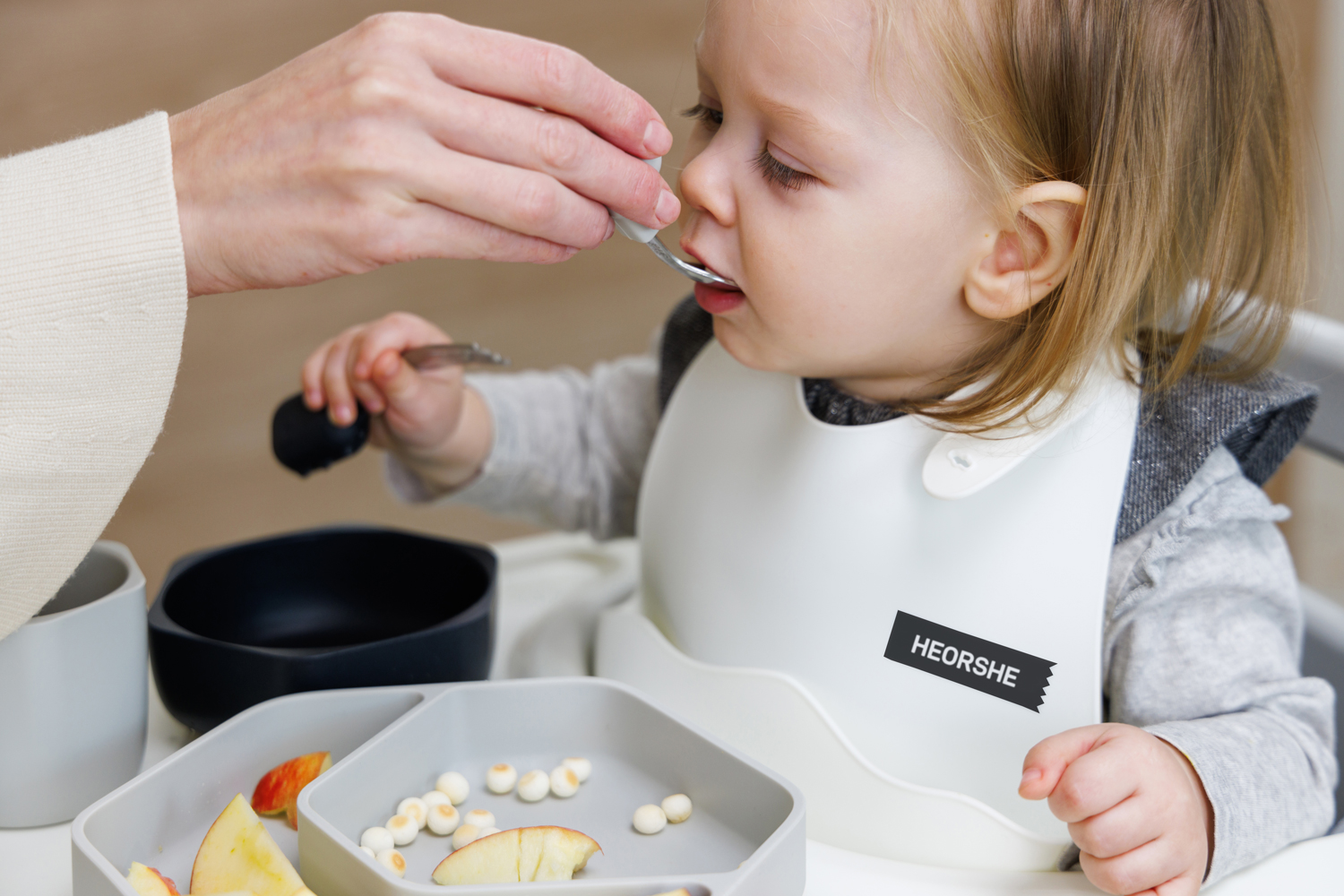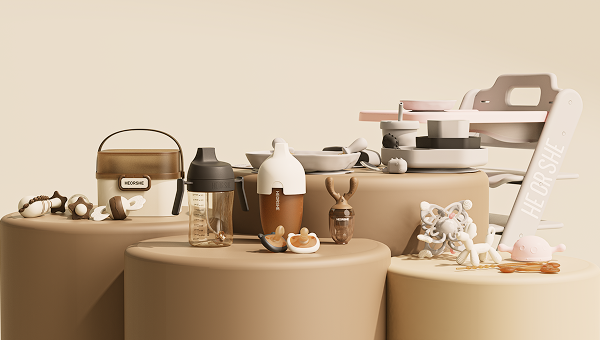Welcoming a new baby into the family is an exciting journey filled with moments of joy and learning. One essential aspect of this journey is ensuring you have the right baby essentials to make feeding time convenient and enjoyable for both you and your little one. Among these essentials, baby bibs and baby bottles stand out as must-haves. Choosing the right options can make feeding less messy, more efficient, and more comfortable for your baby.
In this comprehensive guide, we’ll explore how to select the best baby bibs and baby bottles while considering factors such as safety, material, functionality, and style. By the end, you’ll have a clear understanding of what works best for your baby’s unique needs.
Why Baby Bibs and Baby Bottles Are Essential
Baby bibs are more than just adorable accessories for your baby. They play a critical role in keeping your baby’s clothes clean during feeding sessions, reducing laundry and helping you manage spills and stains efficiently. For teething babies, bibs also help absorb drool, preventing rashes or irritation around the neck area.
Baby bottles, on the other hand, are indispensable for feeding, whether you’re breastfeeding, formula-feeding, or introducing solids. They allow for flexible feeding schedules and can even help other family members bond with the baby by participating in feeding. Choosing the right bottle ensures your baby feeds comfortably and minimizes issues like colic or gas.
Without the right bibs and bottles, feeding time can become a stressful and messy experience. That’s why it’s crucial to invest in these key baby essentials that support your baby’s development and make your parenting journey smoother.

Factors to Consider When Choosing Baby Bibs
When selecting baby bibs, you’ll encounter a wide variety of options, each designed for different stages and purposes. To make the best choice, consider the following factors:
1. Material
Opt for soft, absorbent fabrics like cotton, muslin, or bamboo. These materials are gentle on your baby’s sensitive skin and effectively absorb spills and drool.
For messy eaters, waterproof bibs with a plastic or silicone backing are excellent as they prevent liquids from soaking through to the baby’s clothes.
2. Design and Fit
Look for bibs with adjustable closures like Velcro, snaps, or ties to ensure a snug but comfortable fit. Adjustable bibs can grow with your baby, making them a cost-effective choice.
Bandana-style bibs are a stylish option for drooling babies, while larger bibs with sleeves or food catchers are better suited for toddlers eating solids.
3. Ease of Cleaning
Choose bibs that are machine washable to save time and effort. Silicone bibs are another great option because they can be wiped clean or rinsed under running water.
Bibs with stain-resistant properties can maintain their appearance even after multiple uses.
4. Style and Functionality
Bibs come in a variety of designs, from minimalist solid colors to playful prints. Choose styles that match your baby’s personality or complement your family’s aesthetic preferences.
Functional features like crumb catchers or pockets make mealtime less messy by catching food that falls.

Factors to Consider When Choosing Baby Bottles
When it comes to baby bottles, the options can be overwhelming. Each baby has unique feeding preferences, so finding the right bottle may involve some trial and error. Keep these factors in mind:
1. Material
- Plastic Bottles: Lightweight and affordable, these bottles are easy to handle but may need frequent replacement to avoid wear and tear.
- Glass Bottles: Durable, eco-friendly, and free of harmful chemicals like BPA. However, they are heavier and may break if dropped.
- Silicone Bottles: Flexible, lightweight, and safe. Silicone bottles are gaining popularity for their balance of durability and comfort.
2. Nipple Type and Flow
- Choose nipples that mimic the shape and feel of a mother’s breast to make transitions smoother for breastfeeding babies.
- Adjustable flow rates allow you to adapt the bottle to your baby’s age and feeding habits, ensuring they get the right amount of milk or formula.
3. Bottle Size
- Newborns typically require smaller bottles (4–5 oz) as they consume less milk per feeding.
- As your baby grows, larger bottles (8–9 oz) are more suitable for their increased feeding needs.
4. Anti-Colic Features
- Some bottles come with built-in venting systems that reduce the amount of air your baby swallows, helping to minimize colic, gas, and spit-up.
5. Ease of Cleaning
- Wide-neck bottles are easier to clean and assemble, reducing the time you spend on maintenance.
- Bottles that are dishwasher-safe or come with fewer parts simplify the cleaning process even further.
Recommended Baby Bibs for Every Stage
As your baby grows, their needs change, and so do the types of baby bibs that best suit their feeding and drooling habits. Let’s explore the most common types of bibs and their unique benefits for every stage of your baby’s development.
1. Newborn Bibs
For newborns, smaller, lightweight bibs are ideal. These bibs are primarily designed to absorb spit-up and drool during breastfeeding or bottle-feeding sessions. Soft, gentle fabrics such as cotton or muslin are essential to prevent irritation on your baby’s delicate skin. Newborn bibs are also easy to fasten, ensuring a secure fit without discomfort.
2. Teething Bibs
As babies begin teething, drooling often increases significantly. Teething bibs come to the rescue with added functionality: an attached silicone teether at the bottom. These bibs not only keep your baby’s clothing dry but also offer a convenient way for your little one to soothe sore gums. Look for bibs with waterproof backing to ensure maximum protection.
3. Feeding Bibs
When transitioning to solid foods, larger bibs become essential. Feeding bibs with waterproof layers and food-catching pockets are designed to minimize the mess during mealtimes. These bibs are easy to clean and can handle spills, dribbles, and even mashed food. They are particularly useful for encouraging independent eating.
4. Sleeved Bibs
For toddlers who enjoy exploring their meals with enthusiasm, sleeved bibs offer full coverage for their arms and torso. Made from waterproof and easy-to-clean materials, these bibs are perfect for messy eaters and art projects, providing parents with peace of mind during play and meals.
Recommended Baby Bottles for Different Needs
Feeding time is a special bonding moment, and the right baby bottle can make it even more enjoyable and stress-free. Different feeding scenarios call for specific bottle features to suit your baby’s needs. Let’s explore the best bottle options for various situations:
1. Breastfed Babies
For babies transitioning between breastfeeding and bottle-feeding, it’s crucial to choose bottles that mimic the natural shape and feel of a breast. Options like the Comotomo Silicone Bottle and Philips Avent Natural Bottle feature wide, soft nipples designed to resemble a mother’s breast. This helps minimize nipple confusion and makes the transition smoother for your little one. These bottles also provide a natural latch, encouraging feeding continuity.
2. Formula-Fed Babies
Formula-fed babies require bottles that make preparation and feeding straightforward. Bottles with clear, easy-to-read measurement markings, such as Dr. Brown’s Options+ Bottles, allow parents to mix formula accurately. These bottles are designed for convenience and are often compatible with formula dispensers, making feeding less time-consuming.
3. Colic-Prone Babies
For babies prone to colic, gas, or spit-up, anti-colic bottles are a lifesaver. The Tommee Tippee Advanced Anti-Colic Bottle includes venting systems that reduce air intake during feeding, helping to alleviate discomfort. These bottles are specifically engineered to ensure smooth milk flow while minimizing the risk of air bubbles.
4. Travel-Friendly Options
For on-the-go feeding, compact, spill-proof bottles with secure caps are essential. The MAM Easy Start Anti-Colic Bottle is lightweight and features a secure design to prevent leaks, making it a practical choice for busy parents.
Tips for Buying Baby Essentials
Choosing the right baby essentials can feel overwhelming with so many options available. Whether you’re shopping for bibs, bottles, or other necessities, these tips will help you make informed and practical choices:
1. Safety First
Your baby’s safety should always be the top priority. Look for products labeled BPA-free and certified to meet safety standards. This ensures that the materials used in baby bottles and bibs are free from harmful chemicals that could leach into food or irritate your baby’s sensitive skin.
2. Test Before Investing
Babies can be surprisingly particular about what they like. To avoid overspending, start with a few different styles of bibs and bottles to see what works best for your baby. For bottles, pay attention to nipple shapes and flow rates. For bibs, try out various materials and designs to find the most comfortable and practical options.
3. Budget Considerations
High-quality baby essentials don’t have to break the bank. Many affordable options receive excellent reviews from parents. Prioritize functionality, durability, and ease of cleaning over brand names to find products that offer great value.
4. Eco-Friendly Choices
Make sustainable choices by opting for reusable products. Silicone bibs are durable, easy to clean, and reduce waste compared to disposable options. Similarly, glass baby bottles are long-lasting and free from plastic chemicals, making them an eco-friendly alternative.

Maintaining Your Baby Bibs and Baby Bottles
Proper maintenance ensures your baby essentials last longer and remain safe for your baby to use:
1.Cleaning Bibs
- Pre-treat stubborn stains on fabric bibs before washing them in the machine. Use mild detergents to avoid skin irritation.
- Silicone bibs can be wiped clean with a damp cloth or washed with soap and water.
2.Cleaning Bottles
- Sterilize bottles before the first use and clean them thoroughly after each feeding. Use a bottle brush to reach all corners.
- Inspect nipples regularly for cracks or signs of wear and replace them as needed.
3.Storage
- Keep clean bibs in an organized drawer or basket for easy access. Store bottles in a clean, dry place away from contaminants.
Conclusion
Choosing the best baby bibs and baby bottles doesn’t have to be overwhelming. By understanding your baby’s needs and considering factors like material, design, and functionality, you can find the perfect combination of feeding baby essentials. These products will not only make feeding time smoother but also contribute to creating precious moments of bonding with your little one.


